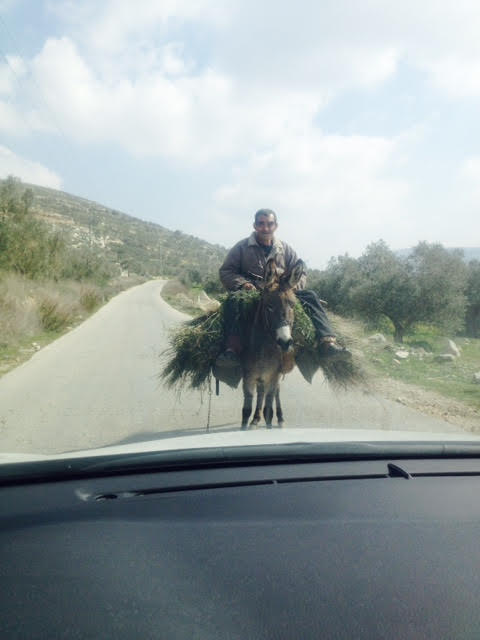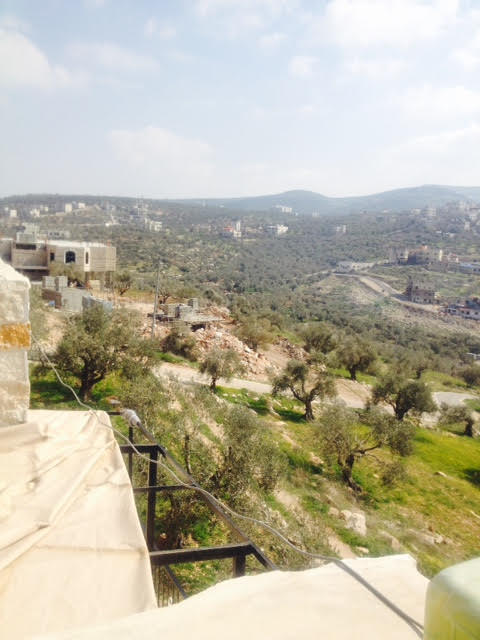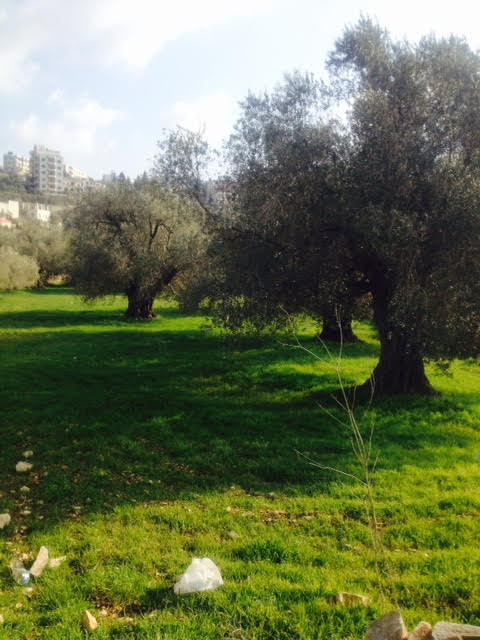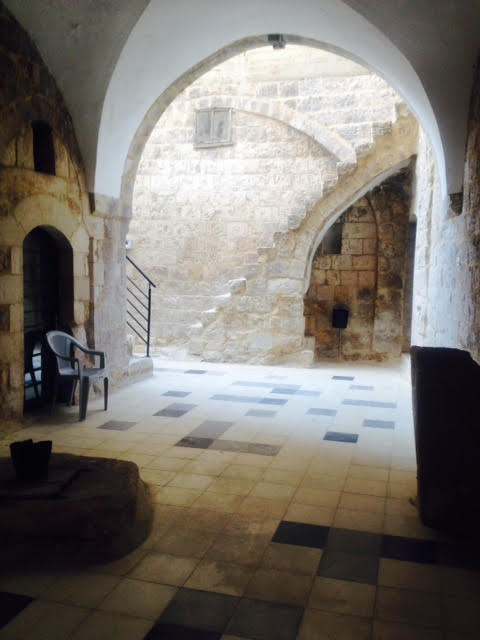North Shomron, Asira Shamaliyya
During the Beach Days we’d been in contact with K., from Asira Shamaliyya, who had organized two groups. Since then he’s kept in touch and has urged us to visit him.
We’re headed for North Shomron. The ride to the Deir Sharaf junction was uneventful. At the junction below Shavei Shomron we came upon a fatal accident in which a car had been crushed beneath the front wheels of a bus (Movilei Hashomron). The injured had already been evacuated when we arrived, and the many soldiers on site prevented us from continuing toward Sebastya. A policeman told a soldier that there are many accidents in the Shomron area caused by the drivers, not by the condition of the roads, and pointed to the bus as an example. We went up to Shavei Shomron, intending to go through the settlement’s rear gate and continue. At the entrance we discovered the rear gate was closed and there was no passage. We returned to the junction and after discussion with the soldier and a phone conversation with the area commander they allowed us to continue, warning us of rocks and Molotov cocktails, with great concern for our personal safety. The commander insisted on giving us his personal phone number so we could contact him if we require rescue. We continued toward Sebastya. The lovely, peaceful road, winding up the hills between the villages of a-Naqura, Sebastya, Injisina, to Asira Shamaliyya, the residents waving in greeting as we passed, and the graciousness with which they helped us – were a sharp contrast that demonstrated how ridiculous were the fears, apprehensions and threats expressed by the soldiers at the junction.

Asira Shamaliyya is surrounded by hills and olive groves covering every inch of the hill and valley. A lovely, ancient village which the villagers say has existed since the Mameluke period.

K. is a big man with a big heart, educated, who studied in England, works as liaison with UNRWA in Ramallah dealing with refugee camps. He was the chef; his wife and children entertained us in the interim.

From our hosts’ terrace we viewed Nablus to the north, Elon Moreh to the west and Mt. Ebal, which looms over the area and is topped by military installations observing what happens. To the east is the el-Badhan region, known as a nature recreation area, with parks and streams, where many Palestinian families visit on holidays and vacations. After a generous welcome at his home our host took us to Wadi Shab’i to see olive trees hundreds of years old (some 2000 years old). Olive trees began to beplanted here during Roman times, and there are cisterns dating from then. On our tour of the village we saw the ancient part, buildings from Mameluke times, and visited an ancient residence whose owner, with the help of a foreign foundation, is turning it into a museum where he will display antiquities and recount the area’s history.
Asira Shamaliyya has 14,000 inhabitants. Many have left since 1967, including five of K.’s brothers, to Jordan, the Gulf states and England, and they’re not permitted to return. Many residents identify with Hamas, but the Palestinian Authority hasn’t held elections since 2006, while municipal elections are boycotted by Hamas and Islamic Jihad. Our host believes support for Hamas is due mainly to projects like a chicken farm and small electronic enterprises that Hamas helped to fund, as well as subsidies to people that help them support their families. Everyone makes their living from farming, especially olives and legumes that grow among the olive trees, as well as from raising sheep. Every house has a cistern to collect rainwater which is pumped from the roof to the home’s faucets. But from August until the start of the rainy season they must buy about 3 cubic meters of water every two weeks (for about NIS 80).

As we drove through the village we met children in the street who remembered us from the Beach Day and extended their hands with a broad smile in memory of the summer. K. said that women who’d been at the beach knew about our arrival, and told him that had we stayed the night they would have invited us for breakfast.
While there are no settlements in the area, and thus no daily confrontations with settlers, the army makes incursions almost every night, sometimes to show the flag and sometimes to arrest people who are wanted.
Here, too, the apparent pastoral scene conceals daily hardships, difficulties earning a living, and the oppressive military presence.
